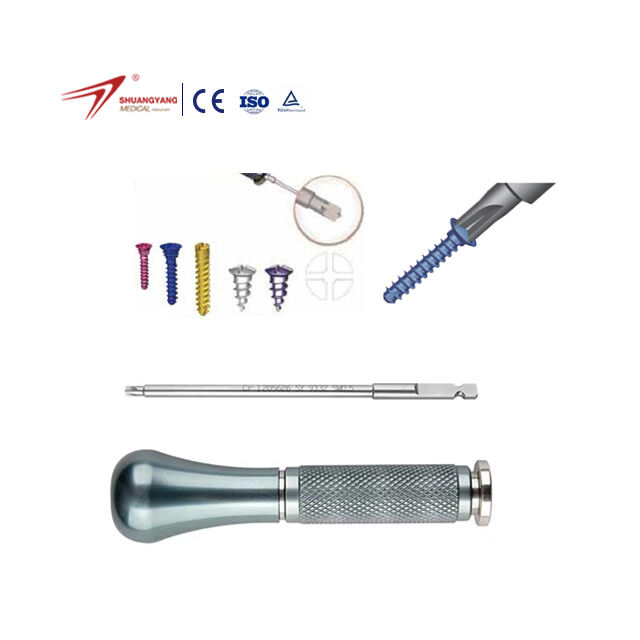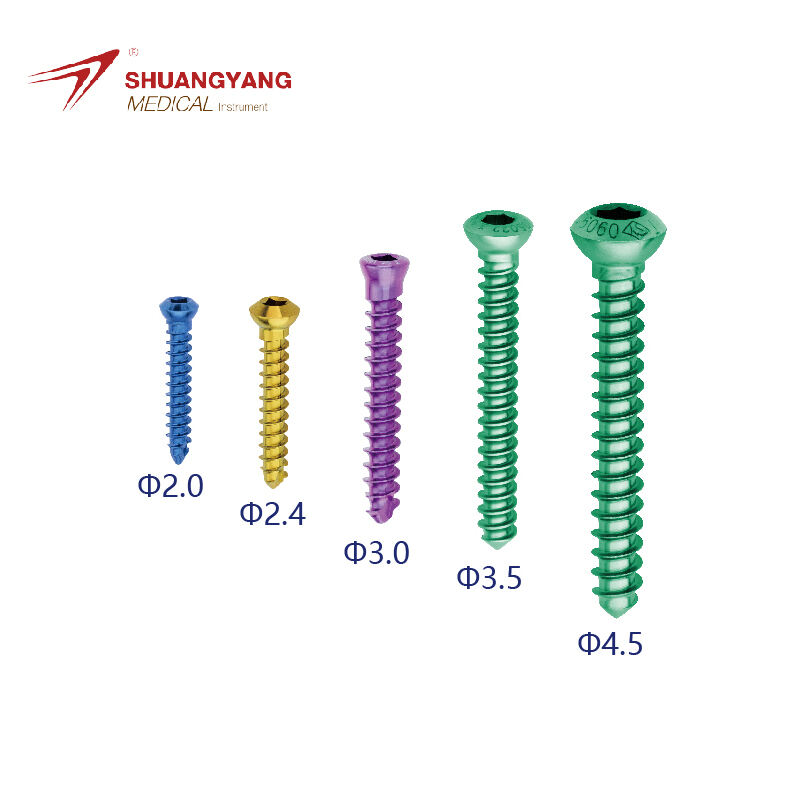The Evolution of Precision in Modern Neurosurgical Technology
Modern neurosurgery has witnessed a remarkable transformation with the integration of advanced cranial systems, revolutionizing how surgeons approach delicate brain procedures. These sophisticated technological platforms have become the cornerstone of contemporary neurosurgical practices, offering unprecedented accuracy and patient safety. The evolution of cranial systems represents a quantum leap from traditional surgical methods, providing neurosurgeons with enhanced visualization, superior navigation capabilities, and improved surgical outcomes.
The significance of cranial systems in today's operating rooms cannot be overstated. These advanced platforms combine cutting-edge imaging technology, precise navigation tools, and sophisticated software to create a comprehensive surgical environment that enables neurosurgeons to perform increasingly complex procedures with greater confidence and precision. As we delve deeper into this technological marvel, we'll explore how cranial systems have become indispensable in modern neurosurgery.
Advanced Features of Modern Cranial Systems
Real-Time Navigation and Imaging Integration
At the heart of modern cranial systems lies their ability to provide real-time navigation during surgical procedures. These systems integrate multiple imaging modalities, including MRI, CT scans, and angiography, creating a comprehensive three-dimensional view of the patient's brain anatomy. This integration allows surgeons to navigate through complex structures with microscopic precision, reducing the risk of damaging critical neural pathways.
The advanced imaging capabilities of cranial systems enable surgeons to visualize tumors, blood vessels, and other vital structures in unprecedented detail. This enhanced visualization is particularly crucial when dealing with deep-seated lesions or operating in areas surrounded by essential brain tissue. The system's ability to update images in real-time provides surgeons with immediate feedback on their progress and any anatomical changes during the procedure.
Precision Planning and Customization
Modern cranial systems excel in preoperative planning capabilities, allowing surgeons to meticulously map out their surgical approach before making the first incision. These systems enable the creation of detailed surgical plans tailored to each patient's unique anatomy. Surgeons can simulate different approaches, anticipate potential challenges, and determine the optimal trajectory for accessing target areas while minimizing impact on surrounding tissue.
The customization features of cranial systems extend to patient-specific instrumentation and guides, ensuring that each procedure is optimized for the individual case. This level of personalization has significantly improved surgical outcomes and reduced operation times, benefiting both patients and healthcare providers.

Clinical Benefits and Patient Outcomes
Enhanced Safety and Reduced Complications
The implementation of cranial systems has led to a marked improvement in patient safety during neurosurgical procedures. These systems provide constant spatial awareness and real-time feedback, significantly reducing the risk of inadvertent injury to critical structures. The precision offered by cranial systems has resulted in smaller incisions, reduced tissue trauma, and decreased post-operative complications.
Studies have shown that the use of advanced cranial systems correlates with shorter hospital stays and improved recovery times. The ability to precisely navigate through the brain's complex architecture means surgeons can achieve their surgical objectives while minimizing collateral damage to healthy tissue, leading to better functional outcomes for patients.
Improved Surgical Efficiency
Modern cranial systems have revolutionized surgical workflow efficiency. By providing comprehensive preoperative planning tools and intraoperative guidance, these systems help reduce operating time while maintaining optimal surgical precision. The streamlined workflow not only benefits the surgical team but also minimizes the time patients spend under anesthesia, reducing associated risks.
The integration of automated features and intelligent assistance in cranial systems has also contributed to increased efficiency in the operating room. These systems can track surgical instruments, provide automated measurements, and offer real-time suggestions for optimal approach angles, all of which help surgeons maintain focus on the critical aspects of the procedure.
Training and Educational Impact
Surgical Training Enhancement
Cranial systems have transformed the landscape of neurosurgical education and training. These platforms offer sophisticated simulation capabilities that allow residents and fellows to practice complex procedures in a risk-free environment. The systems' ability to create realistic surgical scenarios helps trainees develop essential skills and confidence before performing actual procedures.
The recording and playback features of modern cranial systems also facilitate post-procedure analysis and learning. Surgical teams can review procedures in detail, identifying areas for improvement and sharing best practices. This comprehensive approach to surgical education has accelerated the learning curve for new surgeons while maintaining high standards of patient care.
Continuous Professional Development
The rapid evolution of cranial systems necessitates ongoing professional development for established surgeons. Regular training sessions and updates ensure that surgical teams remain proficient with the latest features and capabilities of these systems. This commitment to continuous learning has created a culture of excellence in neurosurgical departments worldwide.
The collaborative nature of modern cranial systems also enables knowledge sharing across institutions and geographical boundaries. Surgeons can remotely consult with colleagues, share surgical approaches, and contribute to the collective advancement of neurosurgical techniques.
Future Perspectives and Technological Advancement
Integration of Artificial Intelligence
The future of cranial systems lies in the integration of artificial intelligence and machine learning capabilities. These technologies promise to enhance surgical planning, provide real-time decision support, and improve predictive outcomes. AI-powered cranial systems will be able to analyze vast amounts of surgical data to identify patterns and suggest optimal approaches for specific cases.
The development of advanced algorithms continues to push the boundaries of what's possible in neurosurgery. Future cranial systems may incorporate predictive analytics to anticipate surgical complications and automatically adjust surgical parameters to optimize outcomes.
Emerging Technologies and Integration
The evolution of cranial systems continues with the integration of emerging technologies such as augmented reality and robotics. These advancements promise to further enhance surgical precision and expand the possibilities of minimally invasive procedures. The combination of these technologies with existing cranial systems will create even more sophisticated surgical platforms.
Research and development in this field are focusing on creating more intuitive interfaces, improving system response times, and developing new applications for complex surgical scenarios. The goal is to make cranial systems more accessible while maintaining their high standards of precision and reliability.
Frequently Asked Questions
What makes cranial systems different from traditional surgical navigation?
Cranial systems offer integrated solutions that combine multiple technologies, including advanced imaging, real-time navigation, and surgical planning tools. Unlike traditional navigation methods, these systems provide comprehensive platforms that enhance every aspect of neurosurgical procedures, from preoperative planning to post-operative analysis.
How do cranial systems improve patient outcomes?
Cranial systems enhance patient outcomes through increased surgical precision, reduced operative times, and minimized tissue trauma. The advanced navigation and visualization capabilities help surgeons avoid critical structures, resulting in fewer complications and faster recovery times for patients.
What training is required to use modern cranial systems?
Healthcare professionals must undergo comprehensive training programs to effectively utilize cranial systems. This typically includes hands-on training sessions, simulator practice, and ongoing professional development to stay current with system updates and new features. Many institutions also provide regular refresher courses and advanced training opportunities.
 EN
EN
 FR
FR
 ES
ES
 AR
AR

